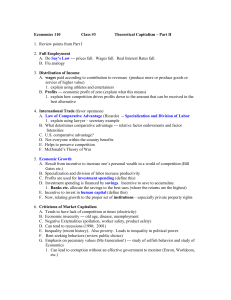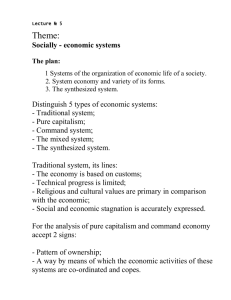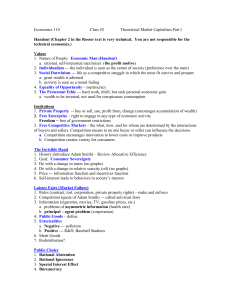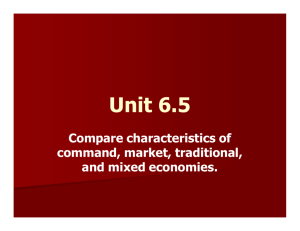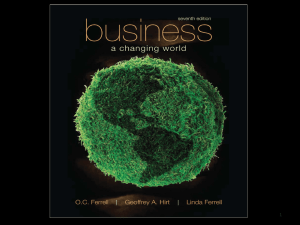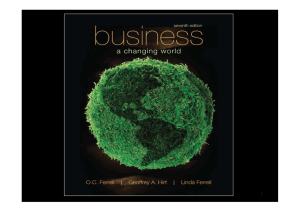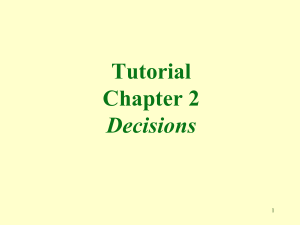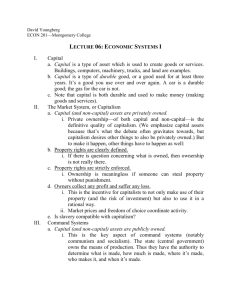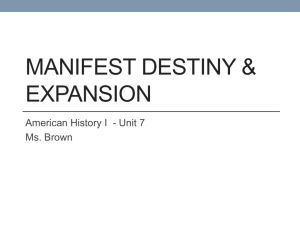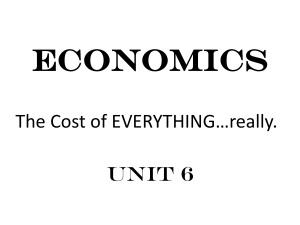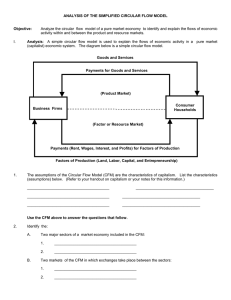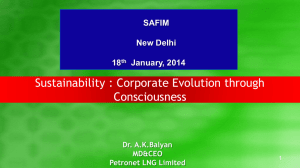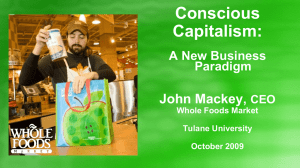chapter 4 “pure capitalism and the market system”
advertisement
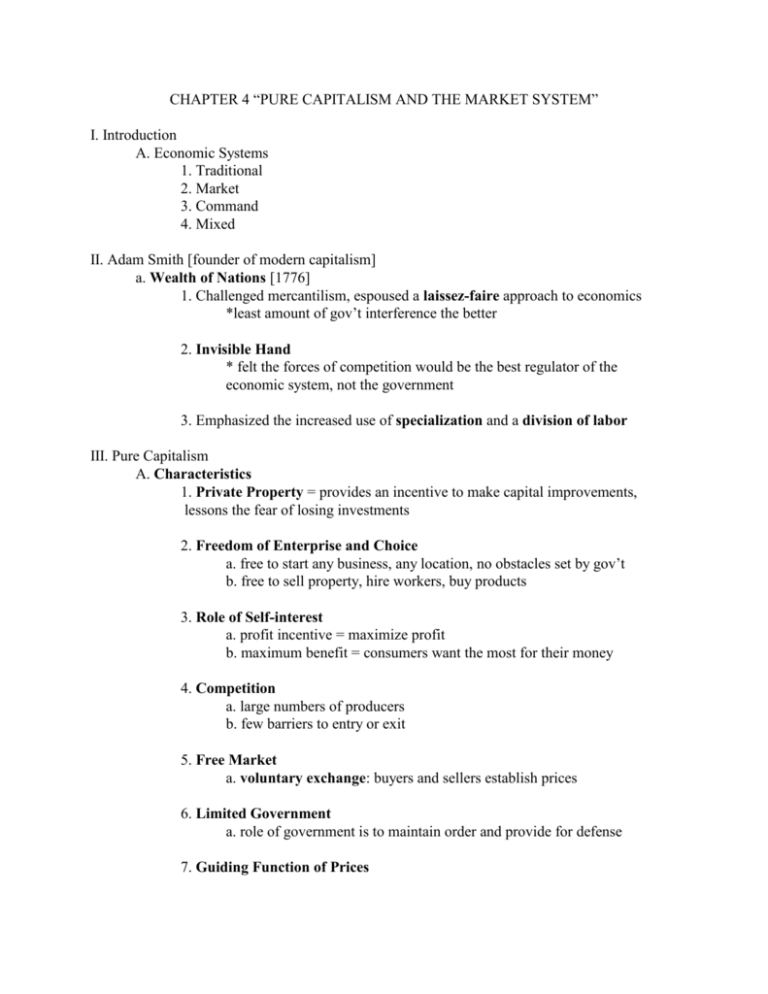
CHAPTER 4 “PURE CAPITALISM AND THE MARKET SYSTEM” I. Introduction A. Economic Systems 1. Traditional 2. Market 3. Command 4. Mixed II. Adam Smith [founder of modern capitalism] a. Wealth of Nations [1776] 1. Challenged mercantilism, espoused a laissez-faire approach to economics *least amount of gov’t interference the better 2. Invisible Hand * felt the forces of competition would be the best regulator of the economic system, not the government 3. Emphasized the increased use of specialization and a division of labor III. Pure Capitalism A. Characteristics 1. Private Property = provides an incentive to make capital improvements, lessons the fear of losing investments 2. Freedom of Enterprise and Choice a. free to start any business, any location, no obstacles set by gov’t b. free to sell property, hire workers, buy products 3. Role of Self-interest a. profit incentive = maximize profit b. maximum benefit = consumers want the most for their money 4. Competition a. large numbers of producers b. few barriers to entry or exit 5. Free Market a. voluntary exchange: buyers and sellers establish prices 6. Limited Government a. role of government is to maintain order and provide for defense 7. Guiding Function of Prices CHAPTER 4 “PURE CAPITALISM AND THE MARKET SYSTEM” 2 B. Modern Characteristics 1. Capital Investments a. goal is to improve efficiency and maximize profit b. roundabout production: capital goods are produced first then consumer goods second. The level of consumer goods and not savings determines the level of capital investment according to this theory. 2. Specialization a. division of labor b. geographic specialization: Nicaragua [bananas] US [computers] 3. Use of Money a. barter = required a coincidence of wants b. functions of money (1) medium of exchange (2) unit of accounting (3) store of value C. characteristics of money (1) portable (2) durable (3) divisible (4) scarce (5) accepted (6) stable in value D. Types of Money (1) commodity money = money backed by a commodity or something that has value of its own other than its use as money (2) representative money = money backed by and exchangeable for gold and/or silver (3) fiat money = money backed by a gov’t order III. Four Basic Questions in a Market System A. What goods and services will be produced? 1. Consumer Sovereignty [when the wants and needs of consumers dictate the products produced] a. dollar votes 2. Profit Incentive B. Who will produce the goods and services? 1. Profits 2. Competition C. How will the goods and services be produced? 1. Profits, least cost CHAPTER 4 “PURE CAPITALISM AND THE MARKET SYSTEM” D. For Whom will the goods and services be produced? 1. Profits 2. Income 3

